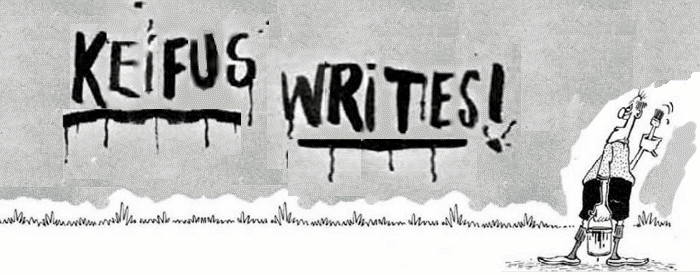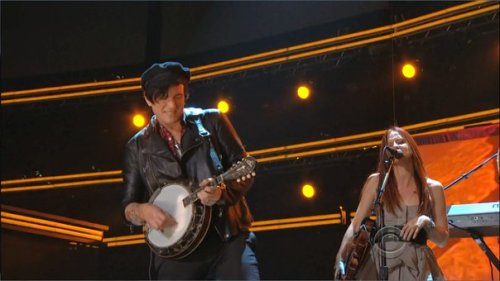Five More Thoughts: Tweet-Worthy Ed.
They didn't quite rise to the level of thoughts, but I kept the label. All I need to do is figure out how to drop about 10,000 characters, and these would be perfect for a Twitter account.
1. Hey, you're Tony Randall!
It didn't happen in my adult lifetime, and our nation has a fine history of masquerading propaganda as fact in the available publication vehicles, but within the living memory of a lot of us, there reside the stolid anchors of yesteryear, the talking haunts of a then-new visual medium, reporting world events and worldly understanding based on their honest best guesses of what was important, as a trail of cigarette smoke rose up beside them in beautiful black and white. The early teevee news is remembered fondly; it didn't cater to the average schlub sensibility as transparently as the news does now, and it'd take the advertising model a few years yet to turn audiences into products instead of consumers. It was certainly smarter and more serious than today, or so they say.
But eyes to the screen was the growing need, and most people blame the corresponding advertising psychology (speed! visuals! drama! only we can fulfill your inadequacy and need!) for the inevitable dumbing-down of the news medium. Not me, I blame the wise-cracking kid of the News family, the weather reporter. Okay, the pre-broadcast meteorological tease and the goofy handwaving and scienticousness that ends up consuming about 25% percent of the show was covered in How to Watch TV News, and it remains annoying. My problem--the one I link to the whole decline of the news industry--is that these little bastards are utterly unaccountable for their weather reports. I mean, it's the weather, and we all understand that prediction remains an inexact science even with impressive modern data and models. And we also understand there's a marketing incentive to hype every drop of precipitation that ever threatens the broadcast area. But since you failed to predict the generational New England blizzard again, and as usual, the roads got plowed and people eventually got to work, you'd think some humility might be in order. You're the same guy who brags when you predict the temperature within five degrees, and today, you're acting like have the Delphic wisdom of friggin Apollo himself, when you just blew it yesterday.
When Johnny Forecaster is caviling around like Mr. Short Term Memory every day, how can we expect the other newscasters to recall important details of last year? Well, we don't anymore. And it's his fault.
2. So I'm sure they'll summarize the last 50 years accurately
Tom Brokaw reports: Boomer$. All I've got to say is finally that age group will get some attention.
3. More nostalgia
Warm, dry escapes from drenching weather always make for pleasant memories. I don't love driving, but driving in the rain can be a kind of solace. The traffic noises die out behind the roar, and you're in a private island of warmth and color in a gray, cold world. I remember driving along with my Dad on a few occasions, watching big, fat raindrops splatter on the windshield of his '72 Blazer, flattening out to viscous wet rings, like liquid spaghettios spread along the glass. Whump go the wipers, plocka-plocka-plocka repeats the rain, making circles on the glass. The heat's on, and there's some urgency that I'll have to get out in this stuff again when we get wherever it is we're hurrying to. I've been watching rain fall on windshields ever since, watching the rings form.
And here's something: it doesn't wet the glass like it used to. It could be my faulty memory, but in the thirty-mumble years since that ride, the essential rain/windshield interaction has changed. I'm puttering home through yesterday's downpour, and huge drops splat and spread, but instantly bounce back to a drop, roll away. These are not the raindrops of my youth.
Obviously the difference has to be the windshield. Mine is more hydrophobic than the one on Dad's Blazer was, reluctant to let the water spread. I think I need a better history of car care products to really address the depth of this, but nowadays, silane-based surface treatments are pretty common, and I don't think they were in the 70s. If I never got around to doing it myself, it's a safe bet that my car was Rain-Xed on the dealer lot at some point. When I was a little kid, automotive wax products were certainly around, which would have similarly repelled water, but I don't know if any were appropriate for the windshield, and the fact that Dad's windows were hydrophilic suggests that he didn't use it there. A year of road filth would lower the surface energy of factory-fresh glass too, and Dad bothered to wash every now and then (as well as hand wax the rest of the car), and maybe that's all it is.
Regardless, progress is disconcerting this way. It erases the intimate moments of the past, sets them in no other medium than our fragile memory. This isn't always bad, but there are also times, when we're stranded warm and dry, that I want to look at the window and say to my daughter, "see the way the rain makes circles on the windshield like that? I remember driving with my father at your age..."
4. Conditioning
Massachusetts is currently trying to pass a texting-while-driving law. It's ridiculously specific set of behaviors to target, but on the other hand, I'd hate to leave a law against general motor assholery to the snap decision-making capacities of the cops.
Anyway, everytime the local NPR affiliate spurts out this legislative drivel, my instinct is always to reach for my Blackberry.
5. Boo-eee-EEEEP!
Any of you still have a landline? Here's what bugs me most about this service: if the technology is sufficiently advanced to inform me, following that 130-dB screech in my ear, that I failed to dial "1" before the number, then why is it incapable of going ahead and placing the goddamn call already? The cell phones have figured a way around this issue, and it's the same provider. So what if I can't push the buttons that well! Stop rubbing it in!


